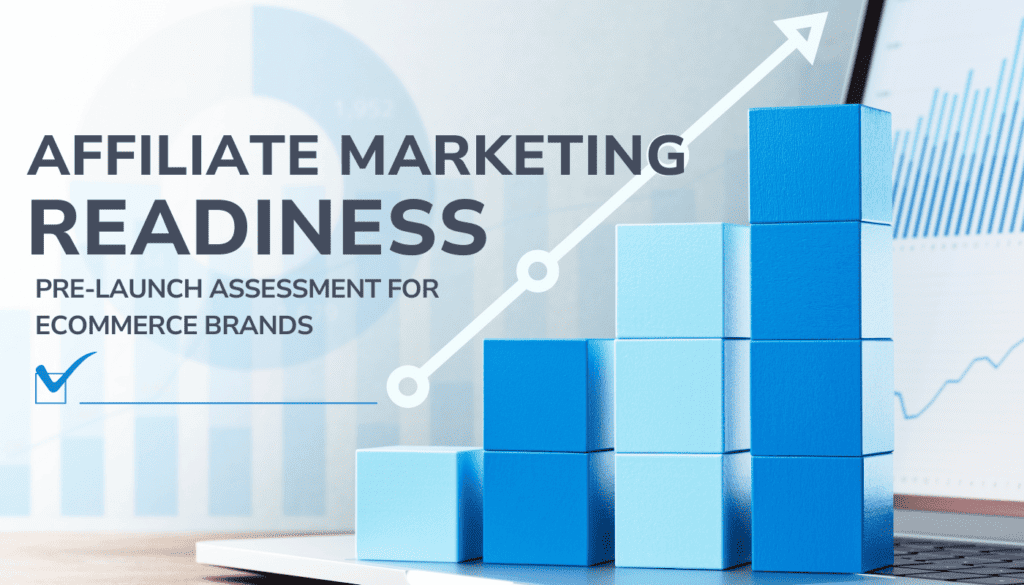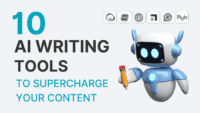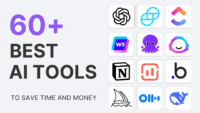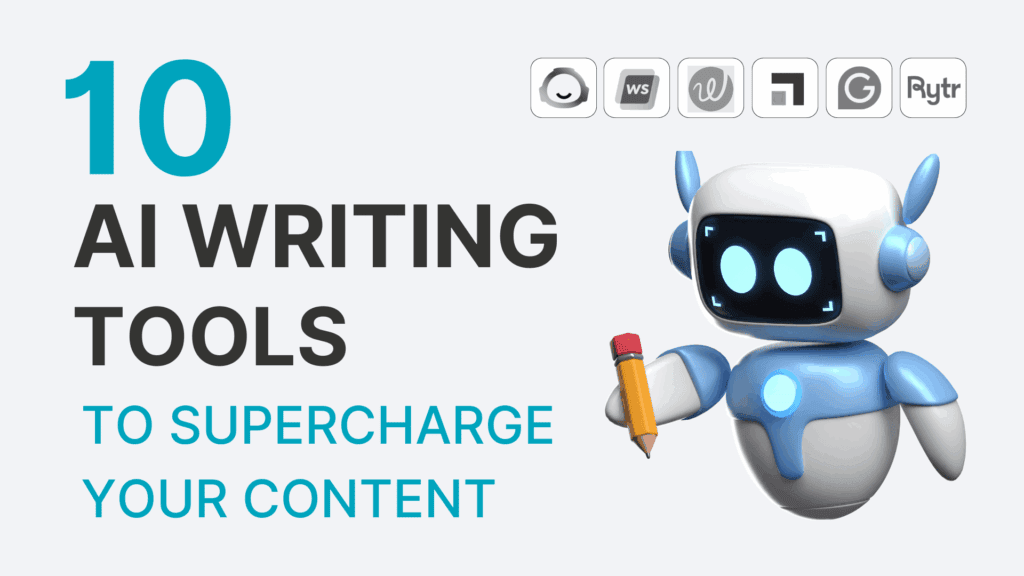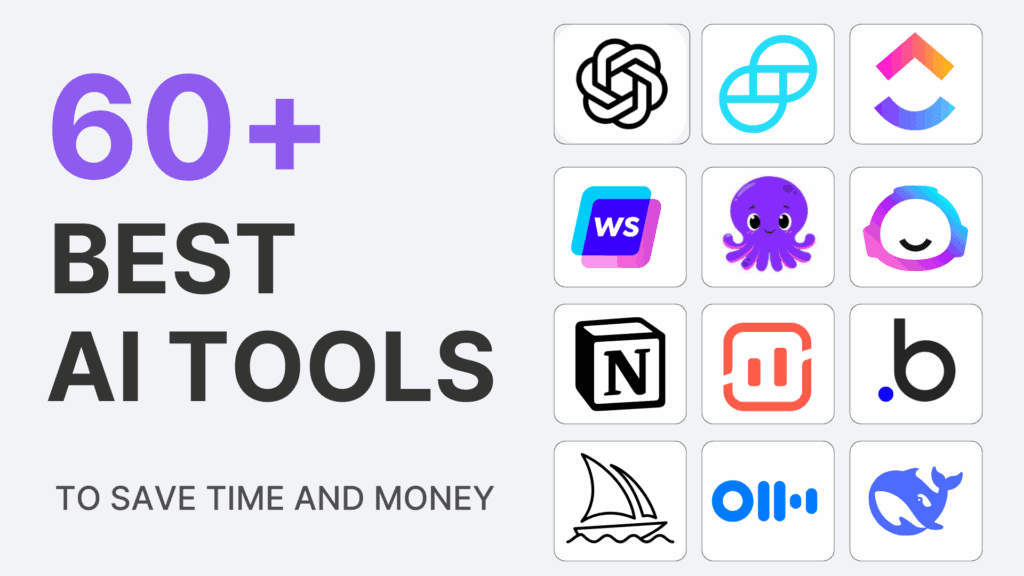Deciding when it’s the right time to launch an affiliate program can be a tricky thing.
Launch too soon after starting your ecommerce business and you will not attract quality affiliates and the program will likely go nowhere, but launch too late and you are potentially missing out on what can be an extremely profitable, additional revenue stream.
On average, it takes 6 to 8 months for an ecommerce affiliate program to yield profitable results and return on investment.
But not ALL brands are “commercially ready” to expand to Affiliate Marketing and expect to yield positive results.
Launching a profitable affiliate program requires careful planning and execution. So, how to identify criteria that will maximize new and existing clients’ growth potential?
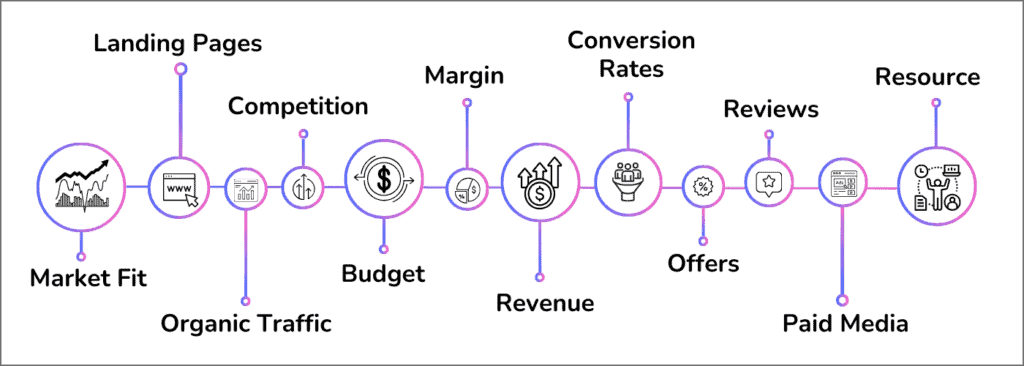
We put together 12 key steps to consider during your pre-launch assessment when determining the timing for launching your affiliate program.
- Product Market Fit
- Website and Landing Pages
- Organic Traffic
- Competition
- Affiliate Budget
- Margin
- Revenue
- Conversion Rates
- Offers
- Reviews
- Paid Media Investment
- Resource and Management
If you are new to Affiliate marketing, check out our comprehensive guide on how to start affiliate marketing to understand how affiliates, consumers, networks, and affiliate program managers evolve in the ecosystem to grow profitable programs for ecommerce brands.
Otherwise, Let’s dive in!
Product Market Fit
Ensure that your product or service is fully developed and ready for the market.
An early-stage start-up in search of product-market fit is NOT a fit for affiliate marketing.
That’s a no-brainer.
If you launch a product half-ready, not tested, or meeting the criteria of your market and answering the pain points of your audience, then your offer is not ready to launch period. Launching an affiliate program at this point may result in negative reviews and harm your brand reputation.
Brands need to be in a good market with a product that can actually satisfy that market.
Ensure your product or service delivers value to a measurable target audience and you already established an online presence in your market with a well-designed website or online store and active social media profiles.
Long-term cohort retention is the best metric for determining if there is product market fit.
Without retention, you cannot invest in acquisition!
Website and Landing Pages
Is your website or online store transactional? Easy to navigate, organized? Is your checkout process flawless? Sending customers to the ideal brand’s landing page, product detail page, review page, and destination at each stage and medium is critical.
If your pages are not optimized for user experience and conversions, how would you feel confident convincing your affiliate partners and their audience that your website offers unique navigation and shopping experiences for users?
Improving the user experience and conversion rate of your landing pages only increases your affiliate adoption.
If you are going to launch an affiliate program and expect to yield profitable results within the first year, you need to be willing and able to invest in a variety of landing pages built for conversion.
Organic Traffic
Your online business should already be generating a reasonable amount of organicbranded and non-branded traffic.
Expanding to affiliate marketing can help scale these numbers, but it’s going to be much more effective when there’s an existing baseline.
Competition
Studying the competition will help you benchmark the baseline of your affiliate program and understand what types of publishers and affiliates, commission rates, offers, and performance you should set a baseline for. Questions you should ask yourself at this point:
- On what network did they set up their affiliate program?
- What are their commission rate structure and model?
- Do they offer bonuses or incentives?
- Do they have regular promotions?
Affiliate Budget
Brands that are willing to invest a minimum starting point of $25k per month and quickly ramp up to $50k+ per month on this “channel” will be successful.
Setting aside a minimum range of $5k-$25k per month to test paid placements as a % of your overall partner marketing investment is strongly recommended.
We recommend brands dedicate a budget for integration and placement fees to secure spots with more coveted, quality, high-traffic partners. This will drive awareness consideration and conversion and accelerate fueling your partner program.
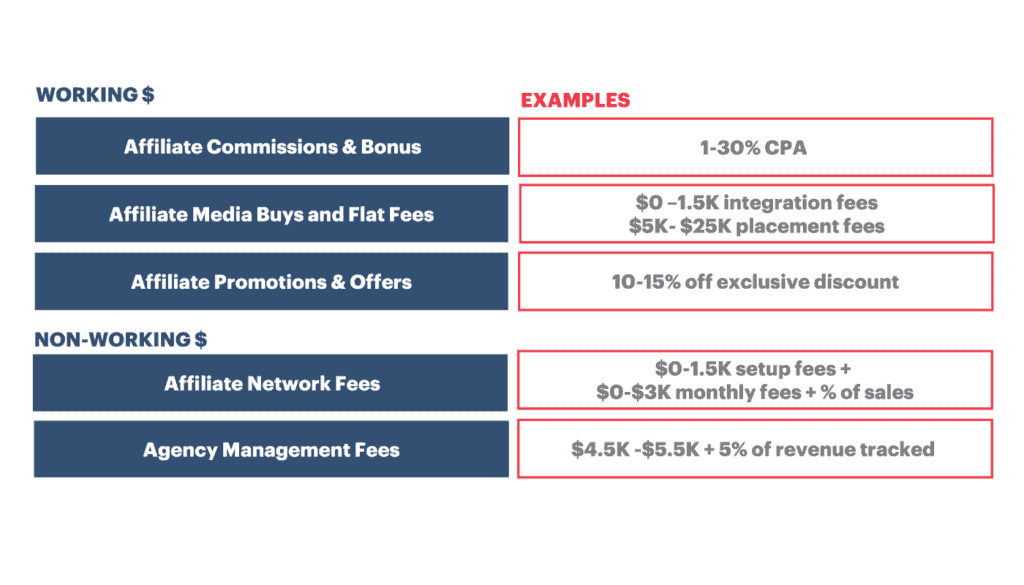
Affiliate Spend is NOT primarily driven by BUDGETS. Rather, it is driven by SALES.
Publisher commission payouts can go up one month or you can end up underspending another month… and that is OK!
While budget plays an essential factor in fueling the growth and ROI of an affiliate program, let’s check other financial factors that help assess and qualify brands with the most likelihood to quickly yield profitable results, when expanding to the affiliate model.
Margin
Ensure that your brand has healthy margins to enable investment in affiliate marketing and to start working with partners.
As we reviewed the components of an affiliate marketing budget, adding all that it can impact your net profits.
Brands will usually target 40-50% gross profit margins (average benchmark – 32% for consumer services)
Benchmark – Industry Averages Profit Margins (Q4 2023)
| Industry | Average Gross Profit Margin | Average Net Profit Margin |
| Advertising Agencies | 41.1% | -9.6% |
| Apparel Retail | 39.7% | 4.1% |
| Beverages | 44.6% | 5.2% |
| Computer Hardware | 34.6% | -1.9% |
| Consumer Electronics | 29.7% | 1.2% |
| Credit Services | 86% | 23% |
| Food Distribution | 14.1% | 0.6% |
| Footwear & Accessories | 44% | 5.4% |
| Home Improvement | 41.8% | 1.9% |
| Luxury Goods | 51% | 6.5% |
| Real Estate Services | 39.6% | 5.3% |
| Tobacco | 36.9% | 7.5% |
| Travel | 48.6% | 1% |
Target a minimum of $3:1 to $5:1 ROAS for your all-in advertising programs to keep profitability up. Affiliate marketing and other referral channels usually yield an average ROAS 40% higher than other paid media channels and the average affiliate ROAS is $12:1 across all industries.
That does leave room for profitable growth! But if you are starting out too early, you may invest in affiliate expenses and resources such as network and management fees, time and efforts, trying to build relationships with publishers, not yet “convinced” by the value added of your brand.
Revenue
Affiliate marketing generates an average of 12% of ecommerce sales
Brands need to be generating enough revenue to support affiliate and partner marketing.
We typically recommend brands have their ecommerce channel generating a minimum of $20M per year.
Let’s take an example;
For an ecommerce brand generating $20M annually in ecommerce revenue:
- 12% x $20M = $2.4M in potential annual affiliate revenue
- Broken down monthly, that is $200K
- A healthy program targeting $5:1 ROAS can afford to invest $40K monthly into the affiliate channel.
- A typical affiliate budget split would be as follows:
- 80% CPA – $32K
- 5% Flat fees – $2K
- 15% Hybrid (CPA + Flat Fee) -$6K
This gives you an idea of the scope of the investment and how to prepare for a minimum budget. Again, remember, affiliate Spend is NOT primarily driven by BUDGETS. Rather, it is driven by SALES.
Conversion Rates
Conversion Rates are one important factor for both your business and the publishers’ perspectives;
On the brand side, high conversion rates are a key indicator that for the traffic and visits on your sites or pages, your content, page structure, and messaging are appealing to your audience and push them to take action to sign up or purchase your products.
The higher your ecommerce conversion rates, the higher your attractiveness to publishers and affiliates.
On the Affiliates side. Affiliates and publishers are willing and able to promote your brand with their time, resources, and capital. They are selective about the brand programs they promote.
If a program has a conversion rate that is too low and drives down the overall time to value, then it will opt to promote other offers.
AOV x CVR x Commission Rate = Revenue Generated
Average ECommerce conversion rates (CVRs) are 2.5%+. If your ecommerce CVRs are below this average,, it is going to be more challenging to build profitability and all the efforts to drive affiliate traffic to your site will be lost and affiliates feel disengaged with your brand as it does not drive the desired results.
Offers
Fuel partners with relevant offers and promotions such as site-wide, exclusive, and seasonal discounts to affiliate partners.
You can get creative and offer a “gift with purchase,” BOGO (Buy One Get One) to entice prospective customers to join/purchase/re-engage.
Offers should align with the brand’s promotional, margin, and competitive strategy.
Remember that no offers can beat products that provide value to customers.
Reviews
Having a great website and product reviews can be important for attracting affiliates to your program. Reviews provide valuable information and insights about your brand, product, or service, and they can help affiliates make informed decisions about whether to promote your offers.
This is a great validator of credibility and trust. Especially when you are asking partners, review sites, gift guides, and influencers to tout your brand.
Getting quality verified non-incentive review volume will only continue to maximize the impact of the channel and unlock new publishers to organically promote these brands.
Some media publishers are gating access to coverage for brands under 25K page visits and with 4-or-below site ratings from customer review platforms.
Remember that the quality and authenticity of reviews matter. Genuine, unbiased reviews are more valuable than overly promotional or fake ones.
Paid Media Investment
Get all foundations and functions of growth and performance marketing in place, including paid search, paid social, and other initiatives and investments.
This often serves as an added validator of the right timing to activate affiliate marketing initiatives.
Do not spend time and effort or recommend a potential client to explore affiliate marketing if the base foundations are not built yet.
Resource and Management
Allocate a minimum of 3-5 hours per week to respond to publisher requests, validate strategies and recommendations, and provide creative, content and landing pages.
Affiliate Management requires deep knowledge and expertise of the channel that in-house client teams usually don’t possess.
As our team continues to grow the programs, additional management hours will be allocated to support larger accounts.
Affiliate marketing is not a CHANNEL. it is a PARTNERSHIP-BASED Model you develop over time.
Wrapping-Up
Affiliate Marketing is the most underrated model and misunderstood lever in performance marketing.
As for building organic interest, traffic, and conversions to your site managing affiliates and building a program requires time, effort, and expertise. But when well-managed, it can yield great value, revenue, and ROI.
We reviewed that the best timing to expand to the affiliate marketing model depends on many factors including, your budget, your products, and offers.
It will also depend on how high-converting your website and landing pages are, where your competition is at in your market, your financials, and how you will be able to keep high margins and profitability.
Finally, putting the right resources in place is essential; your program manager will manage many tasks and activities such as selecting the right affiliate network, setting up commission rate structures and contracts, recruiting partners, optimizing your campaigns, analyzing performance, and monitoring fraudulent activities.
If your $20M ecommerce business with high conversion rates, and high retention rates from a loyal customer base. You are already on the right path for expansion.
If you don’t know where to start, let our experts help you take the next steps in diversifying revenue and expanding to that channel.
If your ecommerce brand or online business is ready to expand to the affiliate marketing model, learn more about the multifaceted role of an affiliate program manager and what are the most common skills, certifications, and tools to be successful once you launch your program.
Success starts with The Good Strategy!


